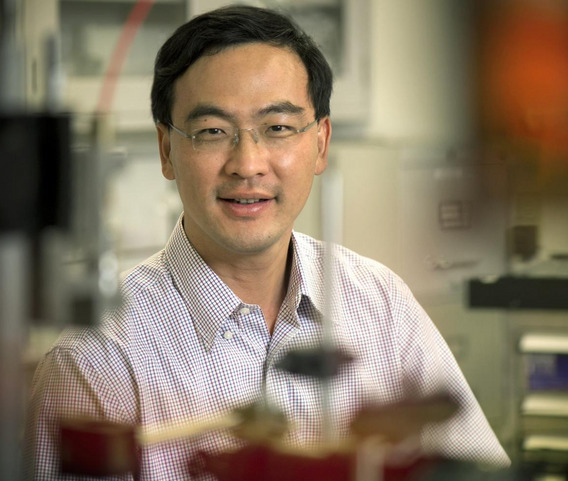UTA developing more powerful auto lidar
- November 21, 2022
- William Payne

Laser sensing for self driving cars could be about to get smaller, cheaper and more reliable. A project at the University of Texas at Arlington (UTA) is looking to replace mechanical steering of laser beams used in automotive lidar with embedding steering directly in VCSEL arrays. Replacing mechanical beam steering integrated directly into high power VCSEL arrays would lead to much smaller, more power efficient, faster, and more reliable lidars.
To make the device, Weidong Zhou, UTA professor in the Department of Electrical Engineering, will use a four-year, $400,000 National Science Foundation grant titled “Fast 2D Beam Steering Device Integrated Directly on High Power VCSEL Arrays.”
“We’re investigating an optical beam steering device based on the electrical tuning of photonic crystal cavities, a type of nanophotonic structure, that can be designed to manipulate light beams,” Zhou said. “Right now most existing methods use mechanical movements to steer the light beam direction. That’s slow and bulky. What we’re doing is much faster, very compact and more reliable.”
High-speed beam steering is important in many emerging applications, including autonomous driving, augmented reality, free space communications, 3D sensing and imaging systems. Zhou said the vertical-cavity, surface-emitting laser (VCSEL) used in the project is also found in computer mice, fiber optic communications, face identification, smart phones, laser printers and smart glasses.
“VCSEL arrays can provide a disruptive technology for high-performance laser detection and ranging systems,” he said. “In addition, the project offers a platform for student education and training and helps workforce preparation in photonics and optics, semiconductors, sensing and imaging, nanotechnology and manufacturing.”
Diana Huffaker, chair of the Department of Electrical Engineering, said the application for Zhou’s project could reach the entire semiconductor sector.
“A new-age optical beam steering device would speed up so many aspects of the semiconductor world,” Huffaker said. “It could revolutionise that world in making current operations so immediate and so effortless.”





